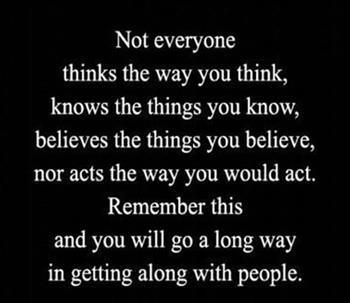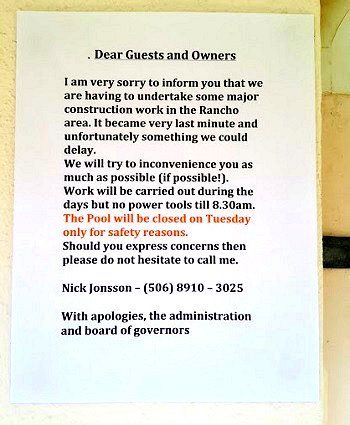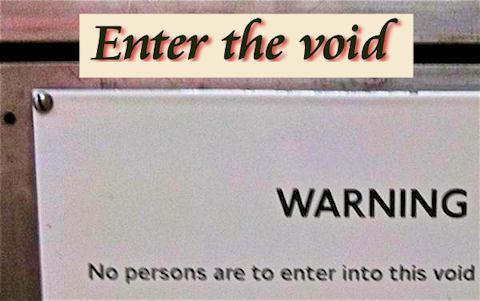Wayne C. Allen's Blog, page 35
September 14, 2015
On Being Connected
Synopsis: On being connected: it’s tricky, relating without judging. It takes effort and presence.
Not sure if there will be an article next week–Darbella and I are off to Nicaragua to check it out! Love these new experiences!

So, there’s a big field across from our condo in Samara, and up until this year, it was the home of a herd of horses. Except at Xmas, when a bull ring is added, as well as food booths, and there’s a festival.
This year, the field also has a herd of cattle.
Including Brahmans. See photo, above.
Anyway, this breed has floppy ears, obviously, and they look you in the eyes as you pass by. I mean, they stare right at you. I posted the photo to Facebook, and captioned it, “Who is looking at whom?”
Of course, who knows what the cow is thinking?
But there’s something there… some internal connection, I think. Not that I’m looking for cow-y friends, but more so that there’s a hidden connection, as in “everything is connected.”
OK, so my real point is that everything is connectable. If we choose.
We’ve been impressed with the ease with which we’ve made friends down here. (Hey, Felissa!!) And speaking for myself, on the other side of that coin, I’ve found myself having judgements about one or two fellow residents.
So, I’ve been watching my mind as I create those judgements, and it’s not pretty. I feel myself tightening up, and shutting down, and it’s based on… wait for it… nothing.
Our ability to connect or not, to be clear or not, to see through to the essence of another… has nothing to do with the other person, (or the cow, but that’s another article 
September 7, 2015
What’s the Name of the Game?
Synopsis: What’s the Name of the Game? Being Awake!
So, I think I’ve mentioned that I’ve been writing for a magazine, Complete Wellbeing, for some time. (This is a link to my articles.) Last week, they asked me to write the lead article, on the topic, Mindful Relating. Hmm. Why me? Kidding.
Anyway, today was the day for the first go, and I cranked out the first draft of exactly 3500 words, and added a blurb for The. Best. Relationship. Ever. because that’s what the entire book is about.
As I was wrapping up the article, the movie version of “The Name of the Game” (ABBA song, but in this case sung by Amanda Seyfreid) came on. Here’s the chorus:
What’s the name of the game?
Does it mean anything to you?
What’s the name of the game?
Can you feel it the way I do?
Tell me please, ’cause I have to know
I’m a bashful child, beginning to grow.
The song is such a plea to be seen, to be heard. Now, of course, the lyrics are normal, and contain a lot of “you make me” language:
And you make me talk
And you make me feel
And you make me show
What I’m trying to conceal
If I trust in you, would you let me down?
Would you laugh at me, if I said I care for you?
Could you feel the same way too?
I wanna know..
Of course, lyrics. Writing it “right” would be cludgy.
I’d make a quick fix: take “make me” and replace it with “you encourage me to” and bingo! We can now name the game.
It’s called Waking Up!
In my article, I wrote:
“Short-form Buddha story: when asked who he was [a god, a sage, etc.] Buddha replied, “I am awake.”Being awake (bodhi) causes one to see through to the true nature of things. I would (and do!) argue that awakening is “what life is supposed to be about.”
And we often settle for persuading someone to serve us the right breakfast cereal.
OK. So, being mindful is all about “seeing through life’s illusions.”
I won’t quote more of the magazine article, except for an exercise at the end of this. But that song–and the idea of naming the game–resonates, so off we go.
Let’s just assume that the Western version of the meaning of life (the one with the biggest pile wins!) might just not be all it’s cracked up to be. Let’s assume that meaning is a whole lot deeper and more internal.
That was Buddha’s point. Being awake is… it.
He discovered this after exploring being asleep. He was asleep as a prince, and as a pauper. He was asleep as a consumer, and as an ascetic. Interestingly, he did not declare other paths wrong. He declared them to be ineffective.
So, he sat. Meditated. Examined the only thing he could trust. Himself.

Waddya mean I’m fragmented???
Why is this the only thing we can trust? Well, as I endlessly write, the things we see, our opinions about the people we relate with, the stories we tell ourselves, our beliefs, etc. are all constructions–they are not real. They are filtered by us, to make the point we are trying to make.
And! We believe the stuff we shovel… until we don’t.
One level of “fix” is to shift some of our more rigid beliefs, heading toward more flexibility, but really, that’s just putting a perfumed bow on the shit pile.
The real level of “fix” happens on the cushion, so to speak, as we go inside and watch the crazy workings of our minds. This is the mindful part.
The kind of meditation we do and teach is shikantaza, which means, “only just sitting.” This as opposed to counting breaths, or chanting, or doing metta, or something active.
The advantage to just sitting is that we begin to see ourselves thinking. And what we see isn’t pretty.
A thought arises, and if it has charge, we are attracted. We start to follow it, as in, we start mind-chattering. I could do this, I should have said that, he’s a jerk, I’m hard done by, woe is me. And as the Buddha told us, we create dis-satisfaction.
And get this! We’re just sitting! The thing isn’t happening, isn’t real!
So, there it is… what we do, all the time, when we are in our heads–mental masturbation–and we get off on it, and suffer.
So, back to the cushion. As we practice, we see that we can detach from clinging to the thought and the story about the thought. Poof. Nothing. Emptiness, thoughts drifting like clouds. Until we attach again.
Now, if meditation leads somewhere, it leads to doing away with meditation. Buddha described the meditative process as the boat across the stream. He said, basically, “On the other side (where one is awake) of what use is the boat?”
The cushion teaches us how to be awake all the time. How to step out of mind-chatter, into the light of the present moment.
Relating Mindfully
The point of the article is to say we each need to learn to detach and awaken, and that’s a solo process, has to be. But we can do it alone, in groups.

The great fish of enlightenment…
That’s what the lyrics imply. I can actually choose someone to practice with. An awakening buddy, if you will. In my case, because I am smart 
August 31, 2015
Jack Bauer and Rational versus Emotional
Synopsis: Just because we have emotions, doesn’t mean we have to be led around by them — Jack Bauer and Rational versus Emotional

I can’t believe I’m going to start off with 24 again, but I, am, so I guess I believe it.
We started watching reruns of Season 5, and good ole Audrey Raines is back — she was Jack’s love interest last season, which of course didn’t work out. Apparently, later in the season, Jack’s dumb daughter Kim will also be back, a two-fer of monumental proportions.
The show is 95% action, 5% people screwing up relationships.
I can kind of bug myself over it — the whole self-involved, me, me, me thing. It’s like:
Jack is off saving the world, this time from a nerve gas attack, and Audrey calls him… he’s on a helicopter en route… to tell him she still likes him, and would like to talk. Nerve gas attack imminent. I want to talk.
A couple of seasons ago it was a suitcase nuke, and Jack was running around following leads, and daughter Kim corners him to tell him she’s been dating his partner. Dirty bomb attack imminent. Thought he should know, I’m dating.
Another classic from last season. James Heller is the Secretary of Defense. Something bad is about to happen. He draws himself up to full height, and says, “That’s simply not acceptable!” Silence. Then Jack or someone says, “That’s the situation, and our only option.” Heller sighs, looks down. “Keep me informed.” Drama queens, abounding.
You may wonder where I am going with this.

No, really! It’s this big!
In each case, the person is putting personal, emotional self-interest ahead of what needs to be done. “I just need you to know that I have a zit, and I’m really, really upsetting myself over it. Now, you can go back to saving the world.”
Not to minimize the things YOU get emotional over, but do keep reading!
Relatives and friends provide us with endless examples, now that client stories have dried up. One relative was here in Costa Rica, and was upset that her son-in-law was criticizing the way she cleaned shrimp. No, really. Quoth she: “He thinks his way is the right way, when everyone knows that the way I do it is the right way.” The irony was lost on her.
Another acquaintance went off to College. Wrote an angst-y post about how no one understands her, how they don’t get the label she hangs on her sexuality, and that they are challenging her, while hitting on her. Of course, all of them are wrong, and stupid, and don’t get the contemporary culture, and they should change, or leave College, because, “I’m upset!”
I could go on, and maybe will, but for now, what I want to say is, all of this reduces down to trying to think with one’s emotions.
See? I lasted a paragraph. Another, positive story. A guy was staying at our condo complex, and left a few days back. We were over saying hasta luego, and he said that he’d had a drama.
He’s our age, and a surfer. The day before, the local newspaper mentioned that a gringo from the US of A had drowned while surfing off of Samara Beach. (Turns out they had the wrong town–Samara is a really safe beach.) This story spread to Facebook, and some people (relatives back home, his 95-year-old mom, etc.) started worrying a bit.
A former friend of his down here, for reasons unknown, posted to Facebook, “R.I.P. Joe Blow,” using our friend’s name. The guy posted it because he thought it was funny, and of course knew our friend was not the victim.
This was our friend’s last day in Costa Rica, so he was out, you guessed it, surfing. He came home to a shit-storm of voice and email from freaked out family. He spent hours calling everyone (including his mom, who remarkably uses Facebook.)
Here’s the point.
He was angry. He said that he wanted to go up the hill and beat the guy senseless. He then sighed and said, “I think I’ve calmed everyone back home down. I let the guy know that I thought of him, and he’s no longer a friend.”
So, emotion would be: up the hill, beat him senseless (and I suspect most of us could relate.)
Rational would be: call family, cut the guy off, after telling him what you thought.
Stupid would be: I know better but I’m angry and hard-done-by, and I have the right to go pound on the guy, because he upset me.
Now, of course, the guy’s behaviour was something our friend chose to upset himself over. But that’s not today’s lesson.
Today’s lesson is: feel your feelings, have your emotions, then calm yourself, regulate yourself, and get over yourself. Then ask, “Rationally, what if anything needs to be done?”

I showed you!!!
Most folk are incredibly immature about their emotions. They assume that, when they are wound up, have wound themselves up, that
a) someone else it to blame, and
b) they have the right and duty to dump their garbage over anyone who is in the way.
Hint: You don’t.
Not if you want to be an adult. Emotions are great: there are tons of good ones, some that are spectacular, and a lot are dumb and painful, but our emotions make us human. They just aren’t much good for decision-making.
Take sex and turn-ons. Feels good, and we want to act upon the feel-good-ness. Great. Go play. However, remember that being turned on is not a marker of anything but that your parts work. A client once had sex with a friend (on a pool table) and said, “I must love him… I had sex with him!” Um.… nope.
The time for planning and figuring out is when emotions are cool.
I’ve been in several emotional situations, as have we all, and none of them, in hindsight, required action. Most required having the emotion, which might mean going off in a corner and having a cry or a scream. None required action directed toward another.
Mostly, taking a step back when we are emotional is key to coming up with an eventual, rational response.
It also provides, with people you are intimate with, a topic for conversation, of the “Boy I was really winding myself up” variety. Which can be hard.
I mentioned to a friend recently that getting past our emotional reactions is like braking a drug habit — in the middle of the “fix,” it feels so good. We want more. Then, we might get past it, and then a situation arises, and we remember how good being bad felt, and we do it again.
Unless we stop ourselves, and that is hard.
It takes practice and persistence to not give in and do what has never worked, but hey, that’s what maturity is like.
Now, if only Jack would start meeting some people who get this, can get over themselves, because, suitcase bomb.
The post Jack Bauer and Rational versus Emotional appeared first on The Pathless Path.
August 24, 2015
A Little Lesson From 24
Synopsis: A Little Lesson From 24 — life is not as it appears, even when it’s filmed!
One of the things we do when travelling is take along DVDs for those times when we might want mindless entertainment, and don’t have Internet. This trip, we brought a bunch of TV shows, including a couple of seasons of our perennial favourite, 24.

Life Lessons from Jack Bauer???
© 24, 20th Century Fox
I was talking with a friend the other day, about life and how he was seeing it
Because of how much 24 we’ve seen lately, I mentioned the show, in the context of how we look at reality. Then I thought I might mention it here, and explain. And I was also pointed in this direction by a Facebook post from a friend.

Ought to be no one… otherwise, perfect!
The key to where I am going with this is contained in the first line. “Not everyone…“
The rest of the text is perfect “the way it is.” The first line needs to be, “No one…”
That’s a “hard to swallow” idea… one that seems counter-intuitive. How could it be that none of us see things the same? Surely, we agree about most things…
Well, there is a kernel of truth to that, but only because of the power of social convention. We are socialized as children to “see things” a certain way. It’s why communities seem to be homogeneous. It’s a convenience.
Let’s start with “stuff” as an example. When I say “milk,” most of you think, “White stuff that comes in a bag (Canadian) and is pasteurized, and originally came from a cow.”
However… you might also see that milk can refer to what new moms produce, or, if we’re considering the beverage, it might be “raw,” or might come from a goat. Or a yak. Now, that, to a Westerner, is additional information. But if you are Tibetan, your primary definition is most likely “from a yak.”
And interestingly, the milk simply remains milk, no matter how it is defined.
Who cares, right?
Well, you ought to. Because this means that all people, who come from different contexts, have different definitions of… everything. Because of this, in general, we pretend to agree, so the whole world doesn’t screech to a halt. And that works fine, until there’s a conflict
Scenario: mom and dad, in the living room. 16-year-old daughter enters.
Mom: Cute outfit!
Dad: You’re not going out dressed like a hooker.
OK, so first of all, what’s neutral? The outfit. The daughter.
The conflict is about how each parent defines the neutral input that just walked into the room.
On to 24!
For those of you who have been living in a cave, 24 was / is (sorta) an ongoing “police drama” involving Jack Bauer (Keefer Sutherland) and the CTU (Counter Terrorist Unit.) And bad guys. And really stupid behaviour, often from his daughter Kim Bauer.

How many time do I have to tell you not to play with my gun???
© 24, 20th Century Fox
The conceit of 24 is that (except for the last season) it was broadcast in “real time.” 24 one hour episodes. During the hour, all that changed was the focus — i.e. from Jack, to CTU, to bad guy, to Kim being dumb.
I latched onto 24 as a good “therapy story.” As you watch an episode, it would seem to be covering everything that happened during an hour (minus commercials, of course!) But of course that’s not the case.
If we leave the world of fantasy, (which includes the idea that what you tell yourself is true,) and we enter the 24 studio while they are filming, you’ll see perfect reality — all of it — surrounding you.
First of all, there is not 60 minutes of film per episode. There are hours and hours of film. Different angles, different dialogues, different action. I think I read somewhere that each episode had 24 hours of film, which was distilled down to an hour.
OK, so what’s up here?
Even though there is “one story per episode,” and the director is working off of a script, how to tell the story is up for grabs. So, the story is filmed repeatedly, with twists, turns, and different angles. Out of all of that “raw data” (film) a 60 minute story is created. To repeat, the director films as the script “directs,” and also adds in a ton of other stuff, to cover all bases.
Not done yet! The film(all of it) is then carted off to editing, and the director and editor snip it down to 60 minutes, and into their vision for the episode. It may or may not be what the writer imagined.
The rest of the film that was shot never sees the light of day. AND! This is key! The rest of the film could be clipped together into many, many different episodes!
What we see is not what happened, but what the director wants us to see.
On to what I mean!
Creating a 24 episode is a pretty good model for how we create and view our reality. Even at our best, (say, meditating) we are picking and choosing what we notice and comment on. Out of all possible scenarios, we pick one theme, and describe that one thing to ourselves. In meditation, it’s the commentator voice, “This hurts, this is boring, what’s that bug doing crawling up the wall?”
If we have past experience and charge around something (say, the 16-year-old above) the script is already written by… wait for it… past script writing, and that provides the framework for what happens next. Just like the director picks film clips that fit the script.
In the example above, Dad sees exactly the same thing as mom (reality — neutral data) yet his story is coloured toward his daughter turning into a hooker. And mom thinks she look great, but that’s based on her stories. Perhaps, “Dad is a critical jerk, and he’s always judging, so I’ll show him, and “like” her dress.”
And then, like idiots, (or like Kim Bauer) they’ll have a fight over whose invented story is “right.”
Solution?
Sure! Glad you asked!
Mom: “So, we have two different opinions about what we are seeing. and I’m curious about your story. As to mine, I have judgements that you are harsh regarding her, and I said what I said out of defensiveness.”
Dad: “Wow. You’re right. I flashed on being a teen aged boy, and how horny I always was, and I scared myself. I’d like to talk about it with both of you.”
Because — and you need to get this — the fight is not about the daughter!! It’s about conflicting, invented stories about the daughter, or better, about disagreements about how to parent.
The solution is called curiosity, as opposed to ever thinking anyone, any time, is seeing the world the way you are. Conflict begins to resolve when we admit to writing stories based upon past scripts and incomplete data. Once we see and believe this, there is actual hope for dialogue and consensus.
The post A Little Lesson From 24 appeared first on The Pathless Path.
August 17, 2015
Relating — It’s not what you think
Synopsis: Relating is a task that moves in one direction — from you to your partner. It is meant to be an exercise in self-awareness.
Last week, I wrote about “Inconvenience, and Why Reasonable Seldom is,” which was a continuation of several other recent articles on relating. I mentioned that I’d toss out a few ideas for more elegant relating, so here goes!

Relating Differently
First of all, most of what I’m going to suggest has a “language component” to it.
IMHO, one of the few things that Freud was right about was what are called Freudian Slips. That’s when words pop out of your mouth that say what you really are thinking. We all do this, sometimes out of habit.
But speaking of habits, if you refuse to correct yourself when you misspeak yourself, you actually make it almost impossible to shift the habit. And relating poorly, believe me, is nothing more than a bad habit. And language is that powerful.

Can I get an amen for my bad relationship?
Let’s, then, start with your relationship.
You don’t have one. None of you do. Me either.
What I mean is this: no matter how hard you try, you can’t take a relationship into a counselling office (or anywhere else for that matter.) What you can take in the room is you and your partner.
But then, what we have is a therapist, you, and your partner. Still no relationship. The therapist says, “I’d like each of you to tell me what brings you here.”
You and your partner, as you speak (or cut each other off, or finger-point, or sigh and roll your eyes dramatically…), you begin to relate. The therapist cannot see a relationship, but(s)he can see how you relate with each other.
Talking about “the relationship” is a way to avoid talking about what is important
On the other hand, if you say, “Here is my perspective on how I relate with my partner, and my take on what isn’t working for me,” there’s hope.
The problem with nouns like relationship, husband, wife, family, etc. is that we toss them out there as if they mean something. “Everyone knows that a good [fill in the blank] is [fill in the blank], and that’s not what we have, so…” Except that there are as many definitions of, say, relationship, as there are people. And “everyone knows” means, “everyone would agree with me that my partner is wrong.”
Second, the only thing you can ever talk about is yourself
Similarly, the key word, when communicating, is “I.” And yet, it tends to be the least used word. As we said last week, the norm is to use “you,” and to blame.
You can read about the Communication Model in a couple of my books, but key to it is the use of “I.” The only authentic use of “you” is when I describe what I sense, as in, “Your eyes are squinty, and you are looking down.” Or, “Your voice seems loud.” That sensory data is pretty hard to dispute, assuming you are stating what you see/hear.
From that point on in the dialogue, all you can talk about is what you are doing with the data. “Your eyes are squinty, and you are looking down, and I interpret that to mean that you are mad at me.”
That is worlds away from, “You are mad at me,” or “You always get mad at me.” The bottom line of great relating is giving up thinking you know anything for sure about your partner–all you know is the story you are telling yourself. So, again and again, you state your guess, and ask your partner what’s up.
Third, if you think your job is to fix or change your partner, please go get a divorce
Your job is to work on yourself, and to share your perspectives with your partner, and vice versa. I mean, really, who appointed you the “fixer” of another?

Let me try pouting with a megaphone
She: I just want him to go with me to see my parents.
He: I’ve made plans for the weekend, so not this time.
She: Stop being unreasonable… and besides, you never want to do what I want to do…
He: I went to your parents’ place 2 weeks back, and I’ve made plans for this weekend, so not this time.
She: (sniffle, sob — to me) See! He’s never going to change!
I encouraged them to talk a bit more, and he did a good job of sticking to a simple statement, as she pulled out all the stops.
I finally stopped things, and said to her, “So, first, are you saying that you want him to do what you want him to, every time?”
She: Yes! That’s what marriage is all about! Doing what your partner wants!
Me: And just for my information, do you go to visit his parents regularly?
She: (Aghast) Of course not! His parents are idiots, and they don’t like me, so I never go.
Me: Do you see a contradiction?
She: )(puzzled… then) No! My request is reasonable, and besides I have the right not to see his parents.
And on… and on…
And no, she never saw what was happening, because she had firmly convinced herself that he was the problem, and she was the solution.
Fourth, you need to be committed
Actually, I wish she could have been, but I digress.
We suggest 30 minutes a day for communicating, using the Model. Minimum. And then, out come the excuses. No time, (s)he won’t, it won’t work.
And candidly, I agree. It won’t work if you don’t do it, and it won’t work if you refuse to give up blaming and fixing.
So, what’s left? Well, someone to share with, cry with, work things through with. But only possible if I get over myself and use the 30 minutes as an opportunity to work on myself.
Because that’s what relating is for.
I’m privileged to have Dar as a witness to my life and my learnings, and I’m privileged to witness her. Not once in 33 years have we tried to fix the other, ’cause, hey! We’re not broken! We listen, we offer perspectives and suggestions if asked (that part is still hard for me, as I want to jump right in there with my insights. Dar is good at telling me to back off.)
Read The. Best. Relationship. Ever., or go find a therapist who can teach you a Communication Model. Learn to work on yourself, and to share what you are learning, and who you are, with your nearest and dearest.
You don’t have to do this alone, but you do have to commit to doing it.
The post Relating — It’s not what you think appeared first on The Pathless Path.
August 10, 2015
Inconvenience, and Why Reasonable Seldom is
Synopsis: Inconvenience, and Why Reasonable Seldom is–the things that make relating next to impossible
A couple of weeks ago, the people that manage the condo complex decided to tear down the roof of the Rancho (a covered outdoor space typically used for lounging and eating.) The old roof was made with palm branches, and it was costly to replace, so they decided to put up tile.
Anyhoo, the date was picked, and we all kinda knew through word of mouth.
Then, this notice appeared, tacked to various walls. Dar read right through it, to be sure to read carefully.
 Practicing inconvenience
Practicing inconvenienceSee it?? Cracked me right up.
We will try to inconvenience you as much as possible (if possible!)
Now, of course, the writer might have actually meant “as little as possible,” but that wouldn’t be worthy of an article.
So, today, I want to lightly touch this and one other idea.
I kinda laugh as I recall days of working with couples. Not my favourite thing. And that was because, in 32 years, only a few times did both parties actually want to relate better.
Maybe you’ll find that peculiar. I know I did, initially. Then, I got used to it.
So, if people didn’t want to relate better, to resolve their issues, what did they want?
Why, a pound of flesh, of course! Each, in their own way, was saying, “I want to inconvenience you as much as possible (if possible!).”
Their relationships got screwed up with practice, lots of practice!
On the other hand, the occasional couple showed up just keen to figure things out, and that was fun. It’s actually a simple matter to teach two people to communicate–to make the relationship about resolving issues without compromise.
Just like every other skill you have, it’s a pattern, and, just like your actual job or career, you have to do it all the time, or you go bankrupt. But with motivated couples, the change was almost instantaneous.
The other couples had this in common–they bumped their noses against an issue, and immediately went to defensiveness instead of being self-responsible and talking the issue through.
There are several flavours to defensiveness
Our yoga teacher has the concept of bus-stops. Each pose has several, and you can get off when you choose. It’s the same with defensiveness. Several bus-stops, and people stop when they get their rocks off.

Longer! You haven’t suffocated enough yet!
Blaming–this is the choice for most. Finger-pointing, inability to listen, defensive posture. “Coincidentally, and every time, whatever is wrong is the other person’s fault.
Reasonableness–I knew I was in for a difficult session or six if either or both of my clients said, “I just want him / her to be reasonable!” (Short form, “Be reasonable!”) I’d smile, and say, “finish the sentence,” and would be met with a blank stare. I’d continue, “Don’t you mean, be reasonable and do it my way?” I got a lot of glares with that line.
Viciousness–here’s the home of “inconveniencing,” a mild form of being vicious. Another term for this process is “extracting punishment.”
If I know you hate it when I “talk down to you,” I’ll do that, a lot.
If I know you hate it when I bring up your past, I’ll live there.
If you detest the silent treatment, I’ll take the vow of silence.
Dealing with the self is not popular
So, anyway, I’d make the comment that we were “staring over, now,” and that this and all subsequent issues would be dealt with in the new way. Couples seeking a solution would sigh with relief.
Couples from the other, “inconvenience” group, would say, “But what about all the other stuff? The thing he did 5 years ago, the things she said to my mother 15 years ago?” And get this! They were serious!
I’d say, “You can’t fix what happened in the past. If you want to stay together, you have to let that stuff go, and focus on now.”
Glares and stares. And one woman, in a fit of brutal honesty, said, “But… I’m not done punishing him yet!”
It’s funny. Lots of people think that their job is to “smarten up” their partner, who is “doing it wrong.” Seldom did I hear, “We are going through a rough patch right now, and I would like to learn how to communicate better, and to work on my sense of discomfort.” And on the rare occasions that did happen, it was even rarer for the partner to say the same thing.
In other words, it was rare to see two people, in relationship, want to work on their side of the issues they were confronting. No indeed. What the vast majority wanted was for me to declare them right, their partner wrong, and therefore to blame for the issues they were facing. And when I wouldn’t, I’d be declared to be unreasonable.
You’d think that people would want to fix things, wouldn’t you. Nah.
And then, some couples would even start following the communication model, would sit and talk, and still stay stuck. The part they refused to fix was the blaming. So, they just got better at the mechanics of blaming.
Because, you see, relating well is an individual task. It’s performed by you, for you, in the context of the relationship. As such, it’s totally about “what I can do differently to bring closure to this issue.”
Not a single “you” in the mix. Not a single attempt to compromise, nor to fix, nor to blame. Just “here’s me, and what I choose to do.”
Next time, some methods.
The post Inconvenience, and Why Reasonable Seldom is appeared first on The Pathless Path.
August 3, 2015
Fearless Exploration of the Void
Synopsis: Only through fearless exploration of the void can we come to terms with and work with the monsters of our own creation

A few weeks back I wrote an article on busyness, and got an interesting comment from my friend Karen. You can read the whole comment on the blog post page.
Here’s the part we’ll have a look at today:
I think sometimes people get jazzed by multi tasking or get warm fuzzies from accomplishing lots of “stuff”. Do you think people’s “Busyness” is yet another attempt to fill that endless “hole” without doing the hard work of being alone with the emptiness and/or having conflicts and discussions that need to happen to resolve the hard things? I think busyness may be an addiction like booze or chocolate, or at least a terrific distraction from really thinking about one’s life and doing anything meaningful about changing it.
I think so many people are stuck in this rut that I hope you will write more on this subject.
Well, you betcha.
Let’s look of one side of this–a part that was not mentioned, then get to the issues raised.
Busyness is encouraged by… wait for it… busIness. I suspect that corporate execs worldwide fairly peed themselves when the whole multi-tasking thing arose.
“Oh boy! Double the output from the same workforce! Let’s do seminars!”
I spent a long 10 months back in 1978 working for an insurance company, in the “Human Systems” department. 1984–speak for “efficiency experts.” They called us “analysts,” and our job was to go in and watch people fill out, say, “Form 101.” We wrote down every action, measured how far the person reached for a pen, for paper, etc., then added it all together, and figured out, from a huge book, how much time, statistically, filling out “Form 101″ ought to take.
We looked for ways to shorten the fill-in time, which in many cases amounted to stuff like moving the stack of papers closer.
The people being observed were never middle management and up. They were clerical workers, and they hated it when we showed up.
I got let go because I spent a lot of my free time in my departments, getting great results by finding ways to eliminate tasks the workers hated. My boss said, “We’re interested in what’s best for the company, not for the workers. Your priorities are backward.”
I was glad to leave, as the work seemed de-humanizing.
I left ahead of the great “multi-taking” push. I’m sure it was adopted whole-heartedly by that company. I’m sure they hired ambidextrous clerks, and tried to get them to fill out two forms at once.
OK, anyway… the take-away here is that multi-tasking is a lie. Try it. You can’t do two things at the same time and give both your full attention. What you can do is get good at flipping rapidly between two tasks, giving the illusion you are doing two things at once. Both things suffer from the shifting.
OK, so that’s my anti-multi-tasking screed. Back to the points raised in the comment.

July 27, 2015
9 Tools for Relating
Synopsis: a continuation of last week’s article. Learn 9 tools for relating

No stuffing allowed
The Structure
Taken from my book, The. Best. Relationship. Ever.
It is our belief that self-knowing happens best in your Primary Relationship. This relationship has as its keys: elegant communication, vulnerability, (the willingness to open up) openness, (the willingness to take in) and intimacy (making full, honest contact.)
Through dialogue, baseline parameters are set, in the following two areas:
Engaged Communication – this is the minimum requirement – that there be open, honest, and intimate dialogue. We propose following the basic Communication Model described below – using it to dig deeply, and learn more of both “self” and “partner.”
Engaged Contact – after the above is established, the couple creates levels of physical contact. It’s essential to create flexible boundaries in this area, and to immediately discuss areas of confusion / discomfort.
Within the “safe hands” of Engaged Intimate, Relating anything is possible. We have the opportunity to trust, to open, to be vulnerable, and especially, to explore our own darkness, in the presence of a partner who is a curious, active participant.
The following 9 Tools form the basis for what is to follow – we believe that this is the only way to achieve personal and relational contentment!
As I noted earlier, this book is seemingly about relationships, but it’s actually a self-development book. Self-work is the only way to engage with life, with others, and with our way of being. Our relationships shift precisely as much as we, as individuals, shift.
What follows are brief descriptions of the 9 Tools
I’ll flesh them out in later chapters of this book. For now, let me suggest some understandings for each of these points, and how each applies to personal living and Elegant, Intimate Relating.
1. Total Honesty
It’s impossible to have a rich and meaningful relationship while keeping secrets (“The flaw of omission,”) or while lying (“The flaw of commission.”)
Many are the excuses for dishonesty:
“I’m an adult and I have a right to privacy.”
“(S)he might get mad if I was honest about everything.”
“I just want to be me – no need to talk about it.”
“White lies aren’t harmful.”
Being dishonest is a mini-betrayal. It’s an indicator that you don’t trust your partner enough to share what’s up for you, and are embarrassed about your actions.
We advocate Total Honesty. And yes, sometimes being totally honest is scary, or might lead to a protracted discussion. But the truth is this: almost everyone who lies gets caught.
Personal: “It is my intention to tell the truth, all the time. I recognize that how “deeply I go” depends on
who I’m interacting with, but I will answer truthfully, and be direct and clear with everyone.”
Relational: “From this point on, my policy with you is Total Honesty. I’ll let you know what I am thinking, how I am deciding, and what I am doing. I am not doing this for permission, but rather to foster intimacy and deepen our relationship. I invite you to do the same.”
2. Being Present
Presence is about 2 things:
being in the moment, the Now, and
being focussed on what you are doing.
Most of us live our lives either in our heads (story-telling), or detached from our selves (numb.) Sort of ghosts, walking.
Being in the Now helps us to stay focussed on the immediate situation, while adding little or no drama through storytelling or future projections. This kind of presence allows us to deal with each situation as it occurs.
Personal: “I just tuned out and ended up imagining all kinds of stories that have nothing to do with the situation before me. I’ll just have a breath and come back to the present moment.”
Relational: “As I listened to you, I caught myself telling myself familiar stories about how hard-done-by I am. I recognize that my stories have nothing to do with you or the situation, so I’m filling you in as a way to come back to the Here and Now.”
3. Being self-responsible
Self-responsibility is not about self-blame. Rather, it’s about claiming ownership of our lives.
It is ‘normal’ to push responsibility away. Most are willing to take credit for success, and want to point a
finger elsewhere when confronted with things judged ‘wrong’ or ‘bad.’
Self-responsibility is simple – “I am the author of all of my life, as I view it right now.” This is not a denial that ‘bad’ things happen,” and that others may even intend us harm. It’s to say that nothing compels us to act in ways that are non-helpful.
Personal: “This is going on right now, and I am making myself uncomfortable. Nevertheless, I am in this situation because of my choices. I can, at any time, choose differently.”
Relational: “I am choosing to upset myself over the way I perceive our relationship. Therefore, I will own my responsibility for having gotten myself into the state I am in, and I will decide what I will do next.”
4. Speaking clearly — Use dialogue to know yourself
We teach a specific Communication Model, and do so because most people are lousy communicators. Rather than use communication to deepen their self-understanding, they use it to justify their “hardened” behaviour and thinking, while proving others wrong. Or, they use communication to blame.
As soon as you harden a thought into a belief, you become less flexible and therefore less teachable, as you shift to, “I know, and I am right.”
Dialogue, on the other hand, is about exploring our personal beliefs as we listen to feedback. It is essential to bear in mind that this exploration is only possible if you choose to hold your beliefs and “demands” loosely.
Personal: “Here is what I see, here is what I feel in my body, and here are the stories I am telling myself.”
Relational: “I want to share with you my provisional guesses about what I see happening right now. I’m wondering about your perspectives on my stories – as I listen to you stating your perspectives on my story, I will not be defensive. I will listen with openness, and then clarify my intentions.”
5. Being Curious – and NODing
When we live our lives up in our heads, dwelling on the past and fearing the future, we think that our version of misery is reality. We get locked into thought-loops. We exit the moment, shut down by tightening our bodies, and dwell in “Never-Never Land.” The “Never” part is actually, “My life will never be different, and I’ll never be able to change.”
Curiosity is the opposite of self-righteousness and blame. If you pay attention, you’ll notice that you are often confused about your own motivations and actions. How then, could you ever think you had a clue about what’s up for others?
Personal: “I am drifting into past and future again. What is actually happening right now? Is anything required of me, right now? What does my body want to do? What would happen if I stopped telling myself stores, sat down, and had a breath?”
Relational: “When I confront situations like this one, I get caught in a mind loop… I’m wondering if you would have time to listen to my description, and then I’d like to hear about how you get yourself out of your mind-loops.”
6. Letting go of Drama and Storytelling
Obviously, we have a story about ourselves – one we are anxious to tell others, and one we believe is ‘true.’ The story contains fragments of our biography, and mostly consists of examples that support our victim-story. One of the great leaps of self-responsibility is the understanding that our stories are “just stories.”
We have much invested in our life-story, and also give much energy to defending everything that props it up. We move past this by allowing ourselves to question both the accuracy and validity of the stories we are telling.
Letting go of drama is similar. Because we spend so much time talking to ourselves, about ourselves, we have a tendency to see ourselves as the centre of everything. Now, certainly, we are the centre of our own universe and experience – we’re just not the centre of anything else. Despite our desire, no one is going to make us the centre of their universe. And the stuff that happens is the stuff that happens. It’s not happening to you personally.
Personal: “Here is what is actually happening right now. I notice the story I’m struggling to tell, where I’m a poor, helpless victim, and I choose, this time, in this moment, to let that story go. In this moment, I’ll be present and aware, and see what, if anything, is required of me.”
Relational: “So, I notice that I’m hearing you speak, and I’m seeing what you’re doing, and I’m telling myself all kinds of stories about how you are punishing me, or trying to manipulate me. I notice that I am creating these stories out of my thought-loops, and I want to acknowledge that I’m doing this. I will now let go, and return to being open and curious.”

The fascinating flames of flexibility
7. Being Flexible
The lynch-pin for Elegant, Intimate Relating is flexibility.
I may have spent years developing my relating style, but I also have the power, each time, to change what I am doing. In other words, I have a choice, each time, to do things differently, or to go back to habitual behaviour.
Integrity plays a big part here
While I know that I have complete freedom of expression, I also begin to look at the consequences
(results) of my actions. I evaluate the result I am getting against what I have committed to – Elegant, Intimate Relating – and only do what deepens my relating.
This is flexibility
Personal: “Here I go again, doing the very things that endlessly land me in the soup. This is who I am, but right now, I can transform this pattern by stopping, having a breath, and making another choice.”
Relational: “Wow, there I go again, blaming you for how I am feeling. I accept that I do this, and am pleasing myself that I caught myself this time. Give me a second to have a breath, and then I’ll shift back to dialogue.”
8. Feeling Your Feelings
Feelings have a bad reputation. People resist their ‘negative’ feelings – are caught in judgement – endlessly assigning “good / bad, right / wrong” categories to everything.
Essential to Elegant, Intimate Relating is total acceptance of each and every feeling
As we meditate, for example, what becomes clear is that thoughts and feelings flow through us like clouds crossing the sky. If we latch on to the feeling / thought, we create suffering for ourselves. If we express the thought or feeling, we can let it go.
There are no ‘bad’ feelings – there are, however, non-useful ways to express them. So, we accept and transform each feeling by expressing it with awareness.
Personal: “I am aware of my anger, my boredom, my sexuality and sensuality, my tightness, my shutting down – all of my feelings. I accept that these feelings pass through me – they are not me, but rather expressions of my moment-by-moment experience. I therefore choose to express them safely and thoroughly.”
Relational: “I’m noticing that [the current feelings] are coming up for me, and I’m wondering if you’d be interested in helping me to fully experience and express them, so that I can learn their lesson and then move on to whatever is next.” (see below, Expressing your Feelings)
9. Exploring Sensuality and Sexuality
Most adults have “issues” around open, honest, and deep revelation and expression of matters sexual. The discomfort is deep-seated – stretching back to childhood.
Because of our discomfort, we talk in euphemisms and hints. We tend to only get part of what we are looking for, and might be unclear about what we want.
We also have desires and attractions for others, and are uncomfortable both with the feelings themselves, and with sharing them. We avoid conversations about our “turn-ons,” out of confusion, fear, and to avoid jealousy. We end up more confused, blocked, and wary.
Personal: “I am doing some serious work exploring my sensual and sexual nature. I am going to use clear language to describe who I am and what I want sexually, and I am going to create “Vulnerability Projects” to explore areas I am curious about / scare myself over.”
Relational: “I am noticing that I have some issues as regards my sensuality / sexuality. I am exploring these issues, and I will keep you informed about what I am discovering, as well as invite you to work on some of this with me. I also commit to keeping you updated on people I am relating with, and letting you know who I find attractive, chargy, etc.”
The post 9 Tools for Relating appeared first on The Pathless Path.
July 20, 2015
Elegant, Intimate Relating
Synopsis: There is a structure to excellent partnerships, which we call Elegant, Intimate Relating

Steps for Elegant, Intimate Relating
Last article, I made a comment or two about relating, and mentioned that this time I’d explore communication. Then, I thought, it might be fun to share with you the ground floor for building a creative and functioning relationship.
As it turns out, I wrote a book about this not so long ago, so I decided to share a chapter with you, entitled, Elegant, Intimate Relating (EIR). Taken from my book, The. Best. Relationship. Ever., which is available as a paperback and as an e-book from Amazon.
EIR is a structure for living deeply and fully with others
With EIR, nothing is taken for granted. Elegant, Intimate Relating requires the active participation of two separate and distinct beings, both of whom are dedicated to rigorous self-exploration. Each is using the relationship to gain depth and breadth of knowledge about the only thing each can know: themselves.
Elegant, Intimate Relating is enacted at the direct meeting of two whole persons. I call this “meeting at the boundary” – I am still I, you are still you, and we meet to explore, to reveal, to be open and vulnerable through honest revelation.
The revelation has to be authentic
In EIR, you are choosing to be transparent with your partner. EIR is not about saying nice things, not about manipulating your partner to see or do things your way. Nor is it about hiding the fact that you have a range of feelings and emotions “in there.” Transparent authenticity is choosing to let yourself be seen – as you are, and how you are.
Elegant, Intimate Relating happens only in the Here and Now
It’s about true vulnerability. Vulnerability happens as I choose to reveal my internal experience and intentions, as opposed to using them as a basis for manipulation.
Vulnerability is expressed by letting out what is going on for you, right now, with no excuses. This is me, right now. And part of “me, right now,” is the emotion that is happening inside of me. Not descriptions of the emotions, not blaming someone for the emotions, but rather the emotions themselves.
Once you “get this,” you’ll also notice that emotions are fleeting. I can be sad, then bored, then weepy, then laugh-filled, then have the feeling of “nothing much,” but only if I do not cling to my story, a.k.a. thinking too much.

Loosen up!
Being unguarded
Un-guarding yourself means being willing to own and share your in-the-moment reality, without filtering. Being un-guarded means speaking your truth – the truth that comes from “Here is what is so for me…”
The point of Elegant, Intimate Relating is to clear the decks so that you can shift what is not working. Letting go of guardedness gives us the opportunity to see how we are structuring our stories to stay stuck. From there, you choose to do something new and refreshing. It’s not meant as an exercise in self-aggrandizement, and emphatically is not a game to stay stuck, while pretending to “get it.”
Un-guarding means loosening the filters, and expressing yourself as you are, with focus and clarity.
The Beginning of Elegant, Intimate Relating
The Tools section of the book describes the “how” of an EIR. Here’s the “what.”
Engaged Intimacy, first of all, requires a dialogue agreement
Let me whip out my crystal ball and declare that your past relationship failures were caused by poor, faulty, or non-existent verbal communication. Other problems were: non-verbal communication, magical
thinking, lack of physical intimacy, and lack of self-responsibility.
We are going to establish a dialogue agreement, and then discuss how to enact it.
The Dialogue Agreement
“I have decided to commit myself to open, honest, and vulnerable communication. I will use a Communication Model, self-responsible language, and will keep my boundaries open and flexible. I will be in dialogue with you for no less than 30 minutes per day, and when issues cannot be resolved within that time-frame, I agree to make as much time as necessary to resolve the issue, with no compromise. I commit to keep you totally informed about what is going on for me: my stories, my games, my evasions. I will keep you completely informed about my feelings, my attractions, and my other relationships. I do so not for permission, but to facilitate clarity.”
The Physical Contact Agreement
Given that we’re discussing your Primary Relationship, physical contact is a given. We’ve noted that Engaged Intimacy is also available for other relationships. I think it’s important to establish physical parameters, even within the Primary Relationship. Thus:
“I commit to using physical contact as another way of exploring my emotions, blockages, and my connection with you. I accept that physical contact is an end unto itself – that it is not primarily a means to having sex. I will be open and honest about my need for emotional expression, and will use safe methods of expressing my emotions thoroughly. I will ask for what I want as regards physical contact, recognizing that what I want “now,” may not be what I want “later.” I am open to expressing whatever feelings arise through physical contact, will stay focussed on myself, and will feel my feelings fully.”
This becomes the framework for Engaged Intimacy
From this baseline, which you are free to add to, but not reduce, we begin the process of building intimacy and presence. I would suggest that you look carefully at the above Agreements, and then read through the “Tools” chapters to follow. Once you have a grasp on how this all fits together, sit with your partner, begin right here with the Agreements, and structure your own agreements.
You will want to write out what you are agreeing to, and then sign it. Remember: all you can agree to is what you will do. This is not a conditional, “If you do this, then I’ll do that” kind of agreement. You are making the commitment to yourself to act in a certain way, while in your partner’s presence. I’ll be reminding you of that as we go along.
Next week: The 9 Tools
The post Elegant, Intimate Relating appeared first on The Pathless Path.
July 13, 2015
The Care and Feeding of Relationships
Synopsis: relationships need maintenance. There’s no magic–there’s commitment to a way of relating
 There is certainly a better way to make your point…
There is certainly a better way to make your point…I was sitting on the rancho the other day, talking with a new friend, and got to thinking (after mentioning) about my books. I decided to edit one of the old ones, Living Life in Growing Orbits, which I’ve never made available on Amazon, or as an eBook.
That’s led to some editing and redesigning.
And THAT has led to my thinking about topics I find important enough to write about.
Before we came to Costa Rica this time, relationship stuff involving several of our friends was in the foreground.
One topic was “honesty.” As in, a friend of ours wasn’t being totally honest with her partner. The issue was not a big one, but her desire for secrecy was ringing warning bells for me.
Frankly, our conversation has stayed on my mind, so I decided to focus a couple of articles on relationships.
I know this young woman very well. I remember back to her previous “big relationship,” and I talked with her a lot when it ended.
She described the following “conflict process”:
We’d start to argue, and I don’t like arguing, so I’d go curl up in the bedroom while he sulked on the couch. Sometimes we’d not talk for days. Then one or the other of us would make an effort to be nice, and pretty soon, things were back to normal.
But I guess they weren’t, because the break-up, according to him, was due to all the unresolved issues.”
You think?
Here’s how her resistance to talking applies to what’s happening in her current relationship: the thing she’s avoiding telling him has the potential to have some emotion connected to it, and she doesn’t like dealing with negative emotions. But this time, she’s not hiding in her bedroom. She’s hiding the information.
Now, I’ve heard it all on the topic or whether honesty is required in relationships. Many are the justifications for “secrets.” Typically, they boil down to, “I have the right to my privacy! Why should I have to talk about stuff that I’m uncomfortable talking about?”
 You mean I can’t just phone it in???
You mean I can’t just phone it in???I have a solution! If you don’t want to talk things through, don’t bother getting into a relationship!
I don’t “believe” in secrets in relationships. And yes, that means there are going to be some uncomfortable conversations.
But really, the issue here is “about” communication, pure and simple.
Darbella and I made a pact, back when were were dating, about both honesty (we agreed on total honesty) and conflict resolution. (We agreed to work our issues through to our complete satisfaction, no matter how long it took. The longest one took 18 hours. Straight. OK. We took pee breaks… 



